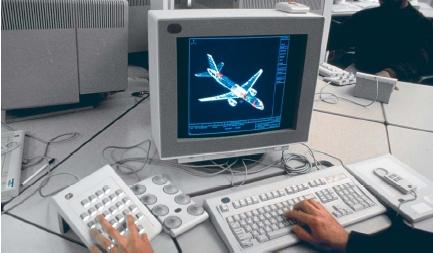CAD/CAM
CAD/CAM is an acronym for computer-aided design and computer-aided manufacturing. The use of computer software programs makes it possible to remove much of the tedious manual labor involved in design and manufacturing operations. Prior to CAD/CAM software programs, engineers building complex machines had to prepare thousands of highly

technical and accurate drawings and charts. When changes had to be made to the plans during the building process, engineers and draftspersons had to make them by hand. This was time-consuming, and often introduced errors to the original plans. When a CAD program is used, the computer automatically evaluates and changes all corresponding documents instantly and without errors.
CAD programs also allow engineers and architects to test new ideas or designs without having to actually build the design. This has been particularly valuable in space programs, where many unknown design variables are involved. Previously, aerospace engineers depended upon trial-and-error testing, a time-consuming and possibly life-threatening process. Computer simulation and testing in the space program reduces time and the possible threat to lives. CAD is also used extensively in the military, civil aeronautics, automotive, and data processing industries.
CAM, commonly operated together with CAD, is a software program that communicates instructions to automated machinery. CAM techniques are especially suited for manufacturing plants, where tasks are repetitive or dangerous for human workers.
[ See also Automation ; Robotics ]
Comment about this article, ask questions, or add new information about this topic: